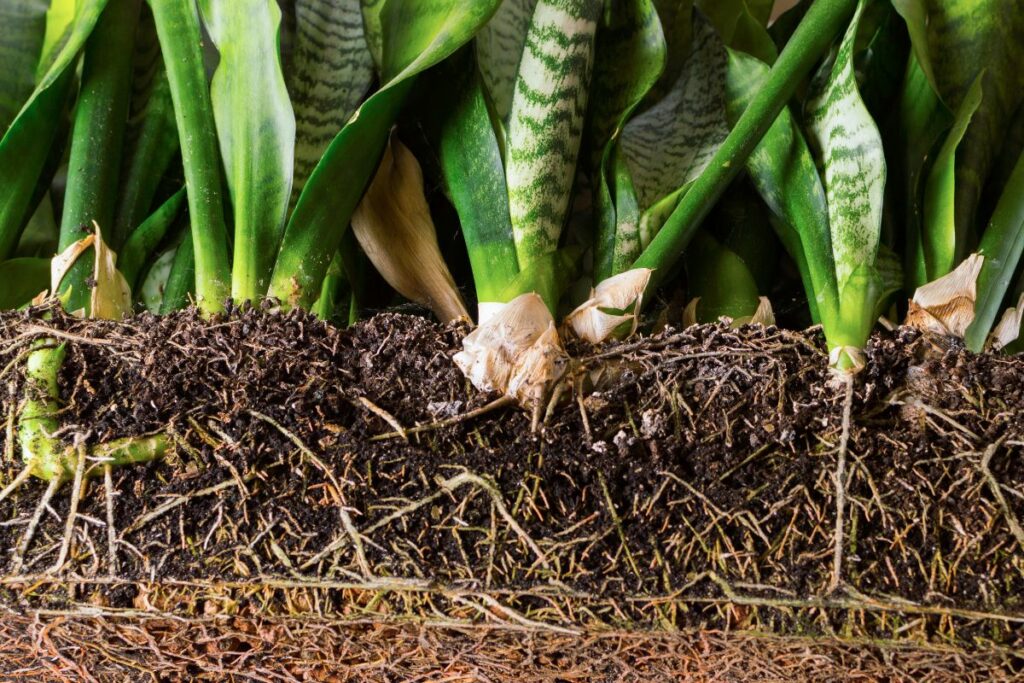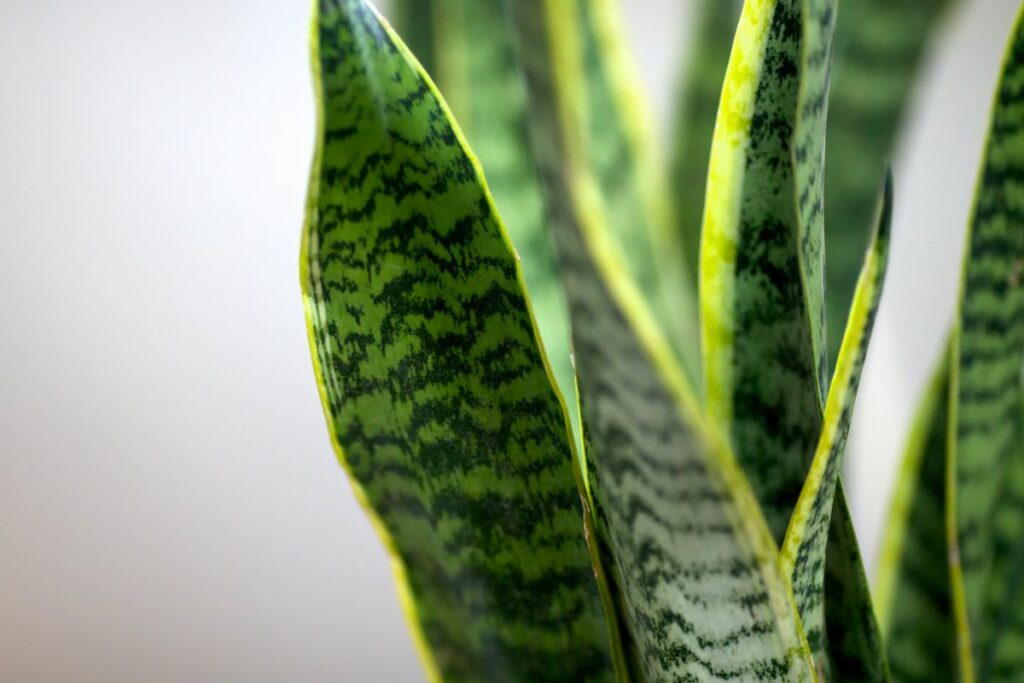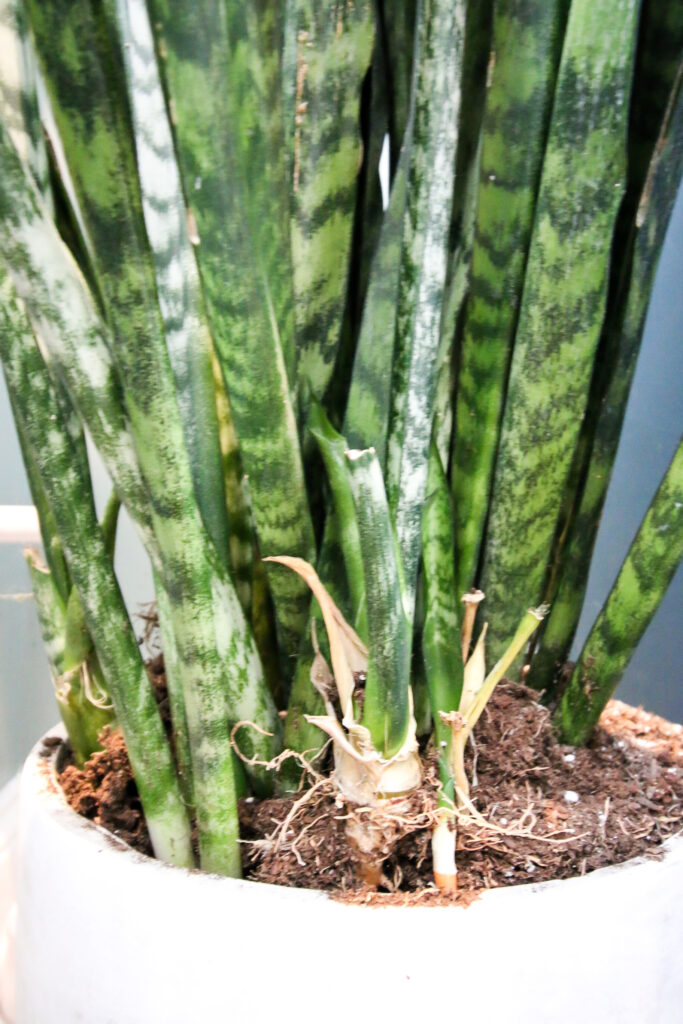Is your snake plant getting mushy? Uncover the causes and snake plant care solutions to restore the firmness and health of your beloved plant!
Snake plants are usually considered to be hardy succulents capable of handling almost any type of living condition.
Plant owners hear this and assume that their snake plant won’t require much effort.
However, even the toughest of plants can succumb to health issues from time to time.
‘Why is my snake plant getting mushy?’ is a pretty common question among horticulturists, especially beginners.
In this troubleshooting guide, we’ll explore what causes snake plant leaves to become squishy and how you can protect your plant. Let’s get started.

Why Is My Snake Plant Getting Mushy?
There are three possible reasons why your snake plant is becoming soggy. Take a look.
1. Overwatering
The most common cause of mushy snake plants is overwatering. As part of the succulent family of plants, snake plants are great at storing water.
They also like their soil to completely dry out between waterings.
I recommend you water your snake plants once every 14 days in the winter and twice every couple of weeks during the warmer months.
When you water your plant more frequently, the soil becomes waterlogged. This increases the risk of root rot, a fast-spreading fungal disease.
Once the infection has infected the root system, it’ll start moving upward toward the plant’s foliage, forcing the leaves to become soft and limp.
Other symptoms of root rot to look out for besides droopy leaves include:
- Soggy, waterlogged soil
- Brown patches on leaves
- A rotting smell coming from the soil
- The appearance of mold or fungus gnats on the surface of the soil
- Roots appear to be a dark shade, give off a rotten smell, and appear frail

The solution
When root rot sets in, the only thing you can do to help salvage the plant is to propagate it to a new pot.
Yet, before you can do it, you need to clip the infected roots and foliage from the snake plant using a pair of sharp, clean shears or garden scissors.
Next, treat the remaining plant with a fungicide. Then, sterilize any tools that may have come in contact with the fungus.
Finally, repot your healthy snake plant. Here’s how:
- Find a clean pot the same size as the one that previously housed the plant.
- Fill it halfway with dry potting soil.
- Next, place the snake plant.
- Finally, add enough soil to cover the root system and base of the plant.

2. Plant Temperature Shock
This isn’t as common as overwatering, but it does happen on occasion.
Despite being hardy, snake plants are highly sensitive to extreme temperature fluctuations.
When they remain out of their comfort zone for too long, their distress will cause the leaves to become soft and soggy.
Why does this happen?
One of the primary features of succulents is their ability to store water in their leaves.
It’s a huge advantage in normal living conditions and one that allows them to withstand dry, hot climates with ease.
However, when temperatures drop below freezing, the water within the leaves freezes, forcing the cells in the leaf to expand.
This damages the overall integrity of the leaf structure, and the result is that the most susceptible regions of the leaf become squishy.

The solution
Unfortunately, there’s no fixing damaged parts of a snake leaf. The plant will simply need to sacrifice the leaf to save the rest of its foliage.
- You can speed things up by trimming the damaged leaves yourself.
- Make sure you use sterilized garden scissors or small shears.
- Then, snip off the leaf right above the base of the plant.
This way, you’ll be helping the plant direct its water supply and nutrients to the leaves that need it the most.
Plus, you’ll also be promoting new growth while maintaining the overall health and well-being of your plant.
Once you’ve gotten rid of the damaged leaves, you need to know how to prevent temperature shock in the future.
For example, if you live in an area where temperatures are higher than 90℉ or below 65℉, move your snake plants indoors to protect them from the scorching heat or below-freezing cold weather.
I also recommend keeping them away from drafty windows and doorways, heating vents, and air conditioners.

3. Using the Wrong Type of Soil Mix or Pot
The third and final culprit for mushy snake plants is that you’re using the pot.
Experts recommend that, for snake plants, the pot should preferably be terracotta with adequate drainage holes to allow excess water to flow out easily.
As for the soil, snake plants, as with many other types of succulents, require a potting mix with the following characteristics:
- Loam soil provides adequate aeration and is well-draining to prevent waterlogged soil
- It contains enough organic material to retain nutrients and moisture for the roots
- Avoid using regular potting soil mixes as they retain too much water because they’re much denser than loam and other types of soil mixes, specially made for succulents.
The solution
One of the best ways to get to know your plant needs and avoid potential problems is to make up your own snake plant soil mix.
This mix contains all the ingredients your plant needs to thrive and be healthy.
Before we get started on the DIY recipe, we should mention that a ‘part’ refers to the amount of material you need to use.
In other words, you’ll be using one measuring container to measure all the ingredients using the ratios mentioned below.
Now, let’s make some homemade snake plant potting mix:
Ingredients:
- 2 parts regular potting mix
- 2 parts perlite
- 1 part coarse sand
- ½ part activated charcoal powder
- 1 part rich decomposed home compost
How to Make:
- Portion out each of the ingredients and place them in a large plastic container.
- Put on your gardening gloves and, using a trowel or small shovel, mix all the ingredients until everything is well combined.
- Finally, fill a pot using the homemade potting mix, place your healthy snake plant, and water lightly.
Before you go...
Discovering your snake plant’s distress can be gut-wrenching. You don’t know why this is happening to your lovely plant, which is standing there, begging for your help.
In answer to the question, “Why is my snake plant getting mushy?” I rounded up the three most common reasons.
Now, it’s up to you to rectify the cause of your soggy leaves and do what you can to prevent it from happening again.
For more information on snake plants and other household plants, download my free printable houseplant quickstart guide.
Thanks for reading!


Hey there, I'm Morgan, a houseplant enthusiast from sunny Charleston, South Carolina. Growing up surrounded by my mom's lush orchids and African violets, I discovered the magic of bringing nature indoors. Thanks to the pandemic, I delved deeper into houseplants, discovering their power to uplift moods and transform spaces. I'm here to spill all my secrets, helping you pick the perfect houseplant - and make it happy. Let's keep your plants alive, together! 😊




